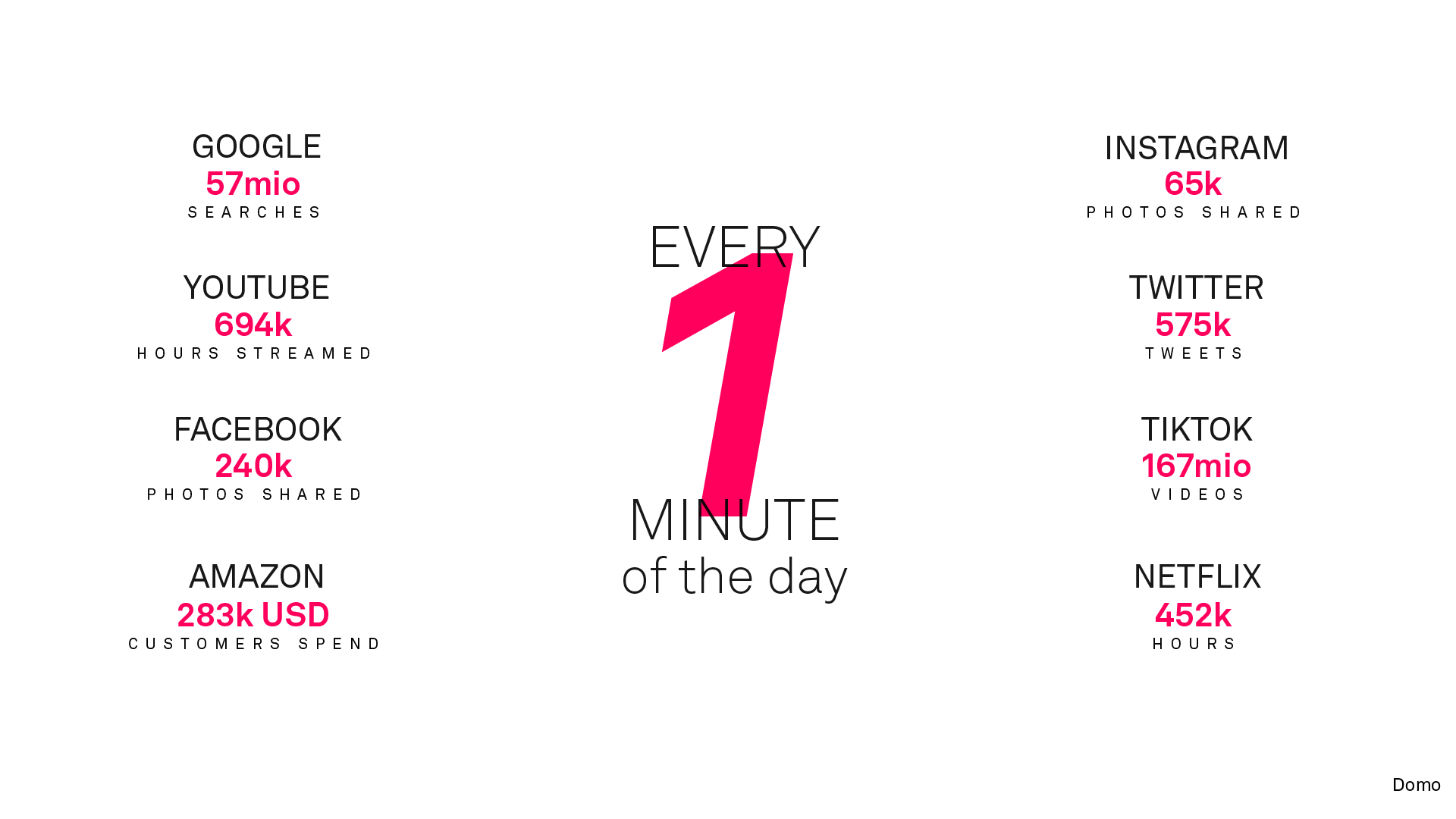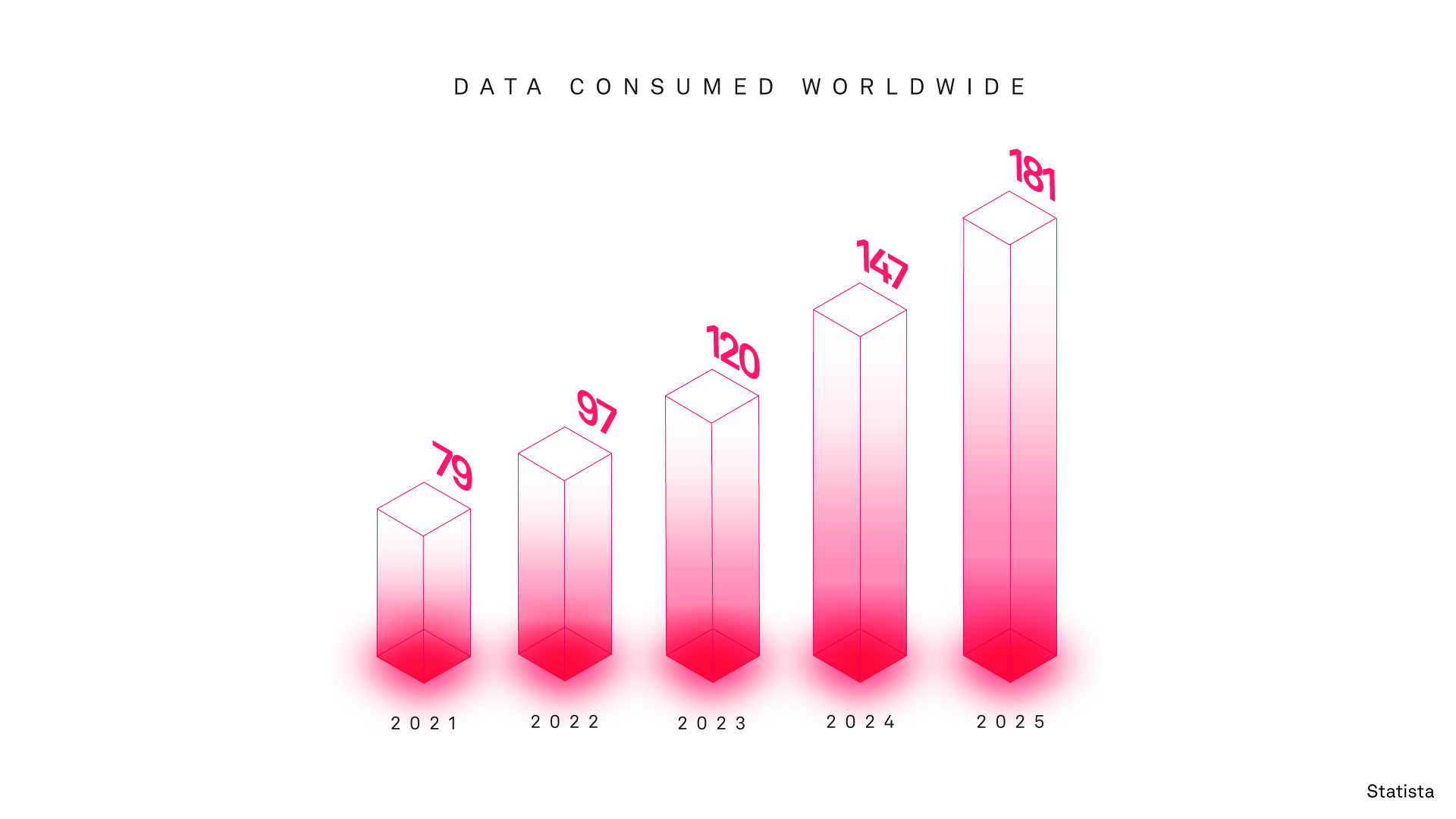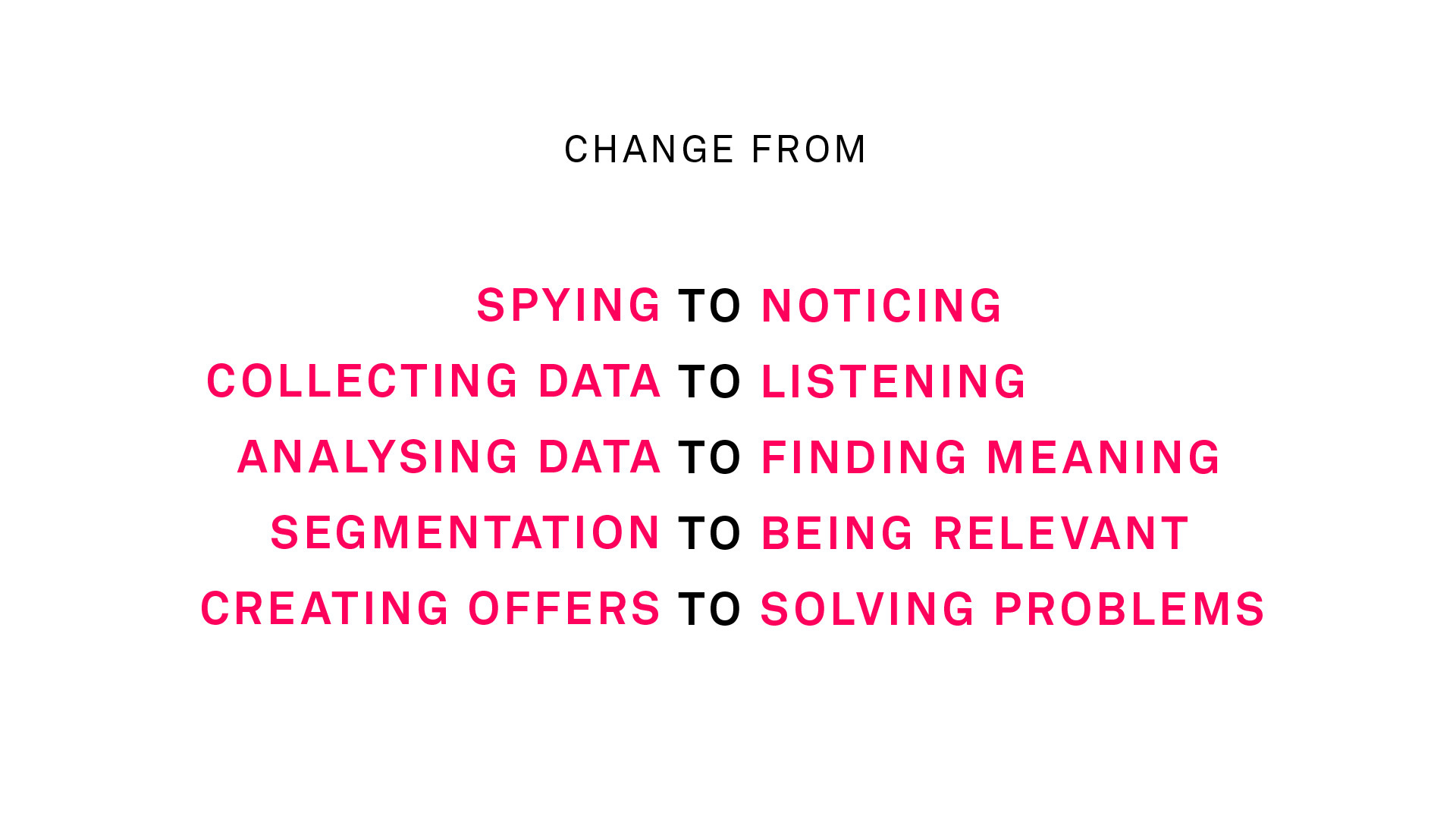Article/ Perspective
Being a Human in the Data Age
Over the last two decades, data has taken the world by storm, shaping both our professional and personal lives. It is now almost impossible to imagine everyday life without the multitude of data and metrics made possible by modern technology – be it when it comes to setting new KPIs at work, analysing more fuel-efficient driving or measuring popularity on social networking sites. However, the key question is: Is our eagerness to make technology more human turning us into machines?
The Data Age
In the past, all we were interested in when it came to operators’ mobile plans were calls and minutes, now, however, everything revolves around data. As many as 79 zettabytes (ZB) or 79,000,000,000,000,000,000,000 bytes of data were created globally last year alone. The number of internet users is increasing year by year – currently there are 5.2 billion users all over the world. On social networks and through content providers, users are sharing huge amounts of data, more than ever before. For example, a modern car, with all the available sensors and detection systems, can store as much as 4 TB of data in a single day. Naturally, the amount of data will keep increasing over the years. It is estimated that by 2025 it will increase to as many as 181 ZB! Due to such exponential growth, in 2030 as much as 51% of all global electricity capacity will be used for the technology and networks required by data devices.

The Age of Great Advantages ... and Disadvantages
In the past decade, the use of such large amounts of data has brought many advantages, but also many problems that must be faced collectively.
Invasive data profiling and collection by global technology giants has provided them not only with illegal insight into people’s lives, but also with a (semi-legal) commodity that can be presold and a tool for managing crowds for political or other idealistic goals. A response to this was the General Data Protection Regulation and Apple’s privacy settings aimed at protecting users. The amount of disinformation is ever-increasing, resulting in the spread of conspiracy theories, but also some real consequences for people’s lives due to the use of the internet as the only medium of information. For the first time in its history, the marketing industry has had to accept the fact that ad placement and selection of digital media is done by an algorithm instead of marketing specialists. The control is now in the hands of online giants, and the only thing still under marketing professionals’ control is the dashboard that shows the results of selected metrics.
The negative consequences of this kind of exposure on people’s mental health are now being noticed for the first time. Generation Z is the first generation to grow up entirely in a social media environment. Research has revealed higher levels of anxiety and depression among this generation than any other age group. And another thing to note is the enormous amount of advertising messages that penetrate our brains. According to some researchers’ estimates, people are exposed to between 6,000 and 10,000 advertisements per day. This is hardly surprising, as apart from one’s close circle of friends, it is now almost impossible to find organic content on social networking sites. All platforms – and consequently our entire digital reality – are flooded with paid advertising messages.
Measurements for the Sake of Measurements
All the available data now allows us more control and insight than ever before. According to the latest survey from earlier this year, the marketing industry alone has approximately 10,000 tools, applications and systems available in the field of marketing automation. We can measure almost anything that can be measured. Of course, the problem does not lie in the data and all the metrics at our disposal, but in our attitude towards them.

It’s a fact that media and platforms sell their services in the same way they have done for the last fifty years – by measuring reach, views, clicks, likes, impressions etc. The forms of brand performance metrics have not changed and nor have the brands’ goals or their KPIs. As if it was really possible to compare a funny TikTok video with the content created by a world-famous director on Netflix, which has a smaller reach and, consequently, a measurably smaller marketing effect? Who would you or your brand prefer to associate with?
The basic problem arose from the mistaken belief that direct access to a user means access to sales. No, access to a user means access to a person, to his or her ideas, wants and needs.
The key marketing parameters are not the understanding of market problems and the search for solutions, they haven’t been for a while; the key parameter is now the data misuse with the aim of achieving monthly, quarterly and annual goals, which are largely based on numbers. Relying on KPIs and all sorts of other metrics – without trying to analyse what they actually represent and who is the consumer behind them – is the main problem of modern-day marketing and the brands that are present in the market. As a result of the intensive launch of new technologies, everyone is simply trying to meet their metric goals, while forgetting the key marketing factor – humans.
Marketing with a Human Touch
It’s time for a change. A change that cannot be dictated by technology. It’s time to get back to the basics, to humans. Brands are created, led and managed by humans. And all consumers and users of products and services offered by these brands are – believe it or not – humans.
It is essential to change not only our perception, but the perception of our industry’s work in general. Something that we were so good at in the past, but we have somehow forgotten how to do it because of the short cuts made possible by technology. Thus, we mustn’t collect data and spy on people, but rather observe and listen to them.
We are not machines, nor do we analyse data; what we do is try to use data to understand humans. We must look for motives and patterns, wants and needs – human ones.
We do not segment, but try to be relevant to people. We use products and services to offer solutions and answers to people’s real problems. In fact, this has been the unchanging essence of marketing ever since its early beginnings.

On the basis of this kind of philosophy, the idea of ‘human marketing’ has recently received a lot of attention in the fields of marketing and communication. Marketing that does not try to deal with technology and everything it has to offer, but instead aims to place people back in the foreground, where they belong.
Eager to master all the technology that actually masters us, we are searching for the holy grail of technology – autonomous artificial intelligence that is supposed to change our world forever. However, the main problem is that we don’t really want to create new intelligence; what we do want is to replace human intelligence with it. Ironically, this is a quintessential human trait – why do something when someone else can do it for us?
It’s a fact that as humans we have not changed much since the beginning of our existence. We can change the world around us, build sky-high cities, connect the entire world population wirelessly, but in essence we are much the same people we were back in the days of the ancient Babylonians, Romans or Vikings. We all have the same – human – needs, trying to merely manifest them in different ways or with different tools. We all want safety, closeness, love, to be heard, genuine relationships etc. Be it face-to-face at a friend’s party or via social networks. Striving for technology and everything it has to offer, we have forgotten all about the ‘human’ sciences that have helped us take care of the development of civilization until now. As if everything that existed before the internet was just some kind of period of wandering in the dark because we were unable to quantify anything. Has all the intuition, perception, insight been in vain? During the times ahead, we must return to the sciences that deal with humans: anthropology, sociology, psychology, culturology and behavioural science. The sciences that will (again) have to become an integral part of the marketing and our brands.
So we should go ahead and use everything that modern technology has to offers. All the tools, all the discoveries, all the possibilities. But we mustn’t forget that there are humans in front of (and behind) them!
Humans who need to be understood, humans who are looking for an answer to their everyday problems, humans who want genuine human relationships, including relationships with brands and those who manage and create these brands. This is the only way to restore consumers’ trust and establish a long-term relationship that will benefit both brands and the industry at large.

Fresh articles are on the way! Sign up for news!